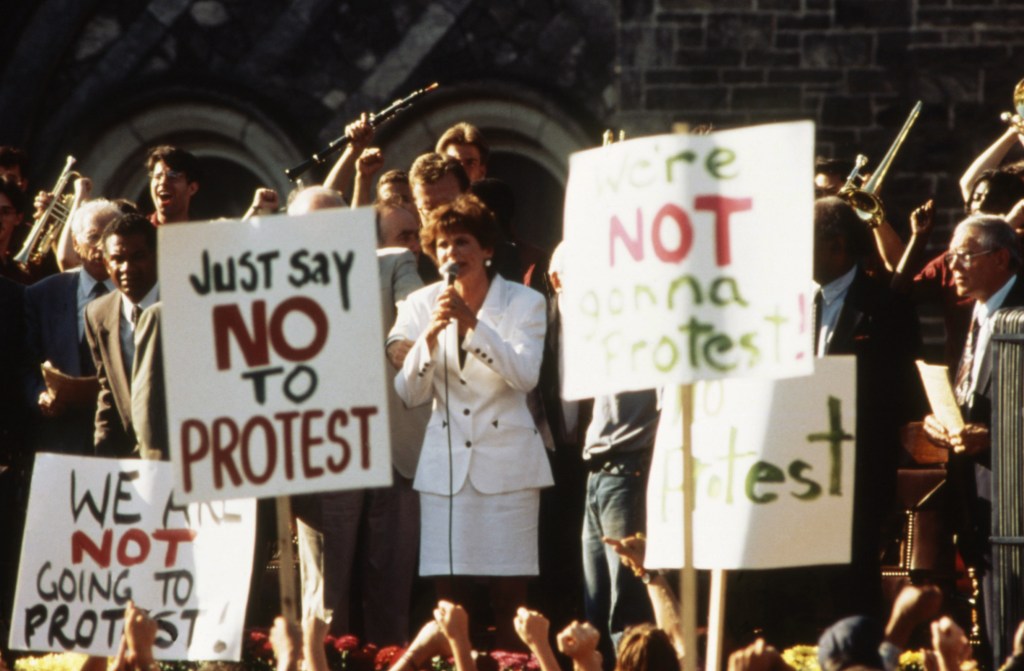This article contains spoilers for the Season One Finale of HBO’s ‘Westworld.’
Does art imitate life or does life imitate art? It’s a question that, perhaps, has never been so ingrained in a TV show as it is in the HBO original series (and internet obsession), Westworld. Set in the most immersive theatrical installation the world has ever seen, Westworld follows Robert Ford (Anthony Hopkins), a megalomaniacal artist/technician striving to make his creations indistinguishable from reality.
Videos by VICE
In last night’s 90-minute Season One finale, Bicameral Mind, Ford explains a theory to Dolores (Evan Rachel Wood) that Michelangelo’s Creation of Adam depicts God inside an anatomically accurate human brain—an example of art imitating biology. The theory, originally suggested by Dr. Frank Lynn Meshberger in the 1990s, argues that the cloth surrounding God in Michelangelo’s painting takes the form of the mind, including the brainstem and the pre-frontal cortex. According to the New York Times, Meshberger maintains that Michelangelo is depicting the moment Adam gained intelligence, rather than his birth. “Adam is already alive. I think what God is giving to Adam here is intellect,” he tells theTimes in a 1990 interview.

Michelangelo, Creation of Adam, 1512. Via Wikimedia Commons
Ford takes it in a different direction, arguing that, “The divine gift does not come from a higher power, but from our own minds.” In this episode, it comes to light that Arnold (Jeffrey Wright), Ford’s deceased partner alluded to throughout the series, wanted to bestow intelligence on the hosts as God does in Creation of Adam. However, Ford believes his creations they must seize it themselves. He creates a bloody “new narrative” that dominates the finale’s climax—the spark of life between the brain and body that paves the way for intelligence.
Today, artists seeking to prod, question, and break the boundaries of reality are plenty. New media artists like Rachel Rossin and Jacolby Satterwhite examine humanity in the digital realm. The Otonaroid and Telenoid, a pair of robots at the Miraikan (National Museum of Emerging Science and Innovation) in Tokyo, perform an uncanny role as the first mechanical news anchors. Virtual reality filmmakers like Nonny de la Peña and Chris Milk create worlds believable enough to trigger deep emotional responses, and VR theme parks immersing visitors in physical video games are popping up all over the world. In the tech sector, Rony Abovitz’s mysterious mixed reality start-up, Magic Leap, is attempting to create virtual sights indistinguishable from the physical world. Life will go on to imitate art as these creators and more watch Westworld and internalize the ideas presented by showrunners Jonathan Nolan and Lisa Joy.
As artists themselves, Nolan and Joy weave ideas top thinkers are grappling with today into Westworld. Artificial intelligence, robotics, 3D printing, biomimicry, land art, history, religion, philosophy, and drama are copied from life into both the show and the park’s DNA. One reason the park is frightening is because it’s so similar to what virtual reality promises in the future: a completely immersive storytelling medium. In our reality, it seems that art is still imitating life, but in Season Two of Westworld, it seems viewers will find out if life has what it takes to imitate art.

Westworld, Season 1, Episode 1: ‘The Original.’ James Marsden as Teddy, Evan Rachel Wood as Dolores. Photo by John P. J.
HBO has renewed Westworld for a second season. Watch the first season on HBO and HBO GO.
Related:
‘Westworld’ Jumpstarts the Conversations We Need to Be Having About A.I.
Projection Mapping And Robots Combine In Bot & Dolly’s New Film



